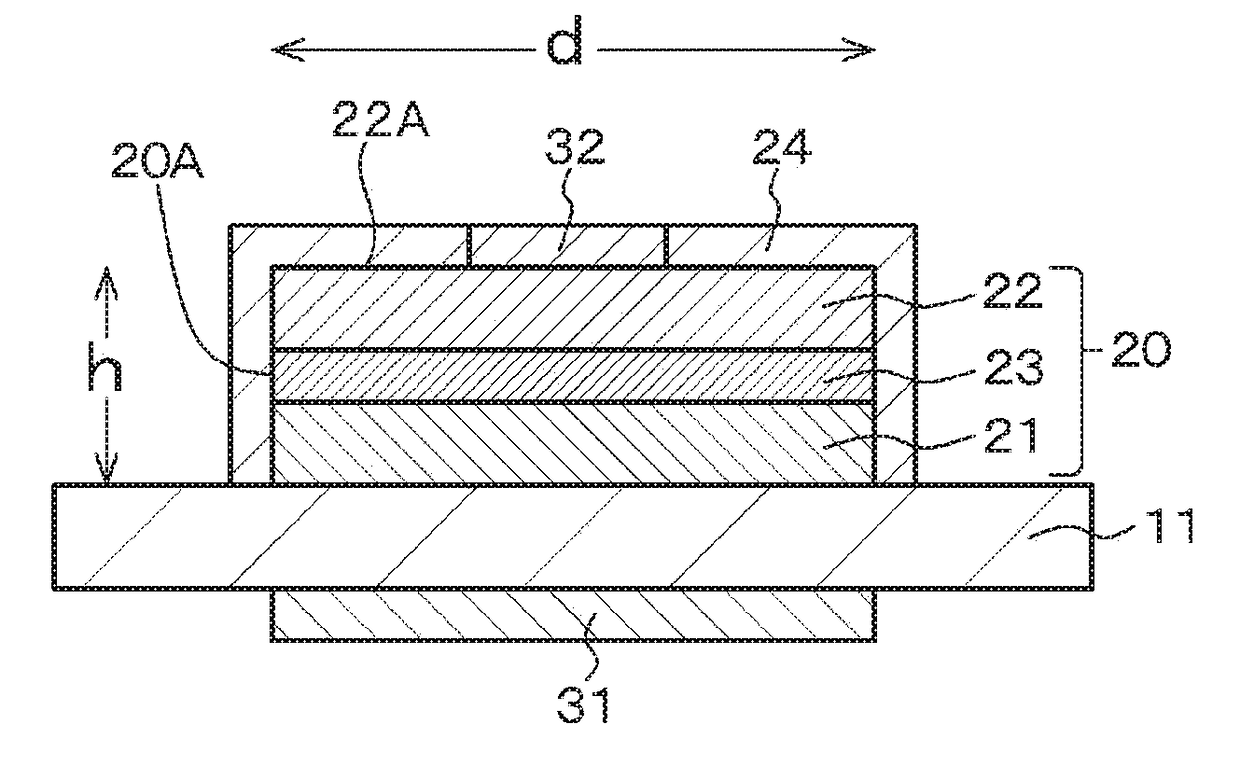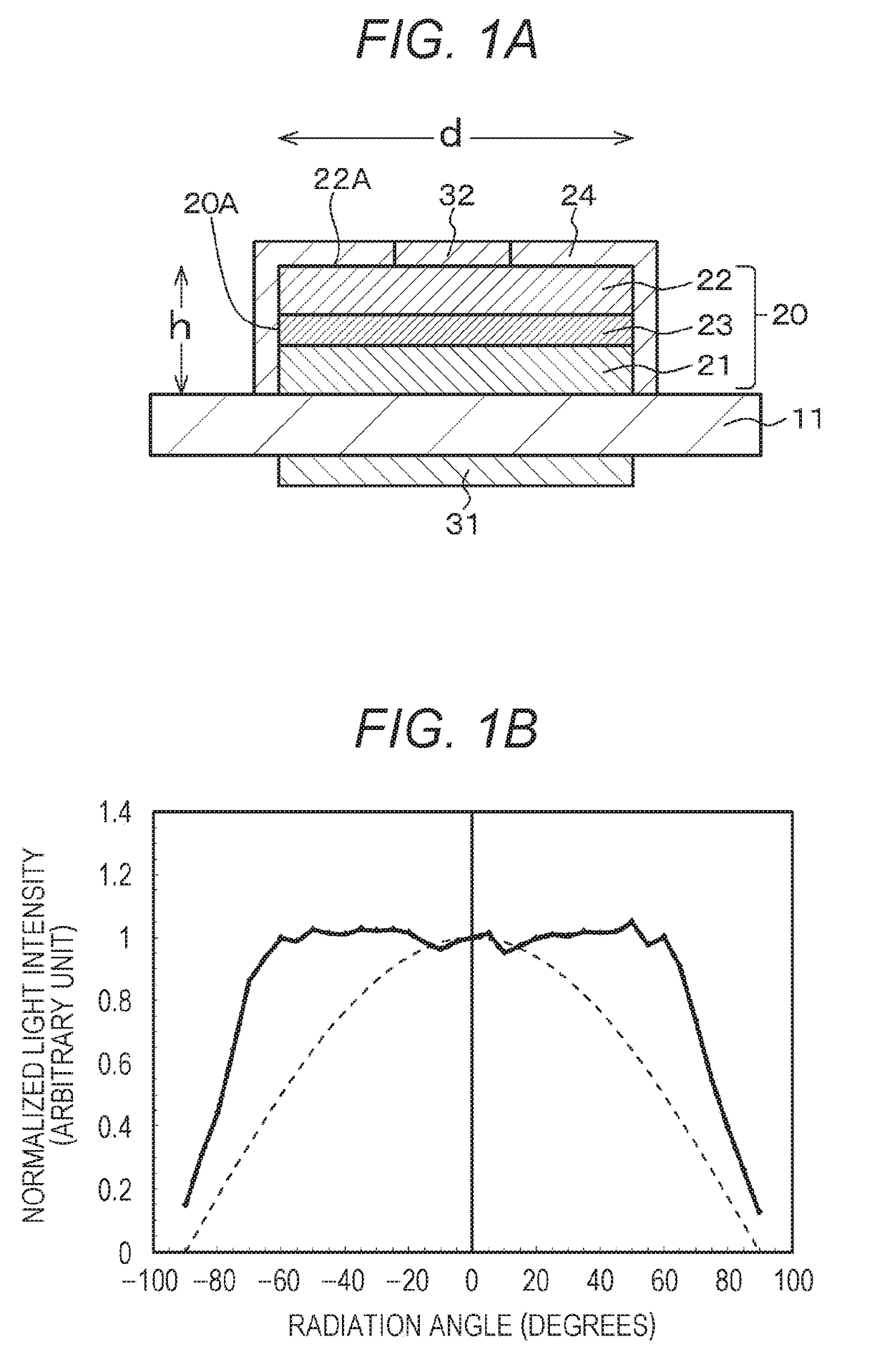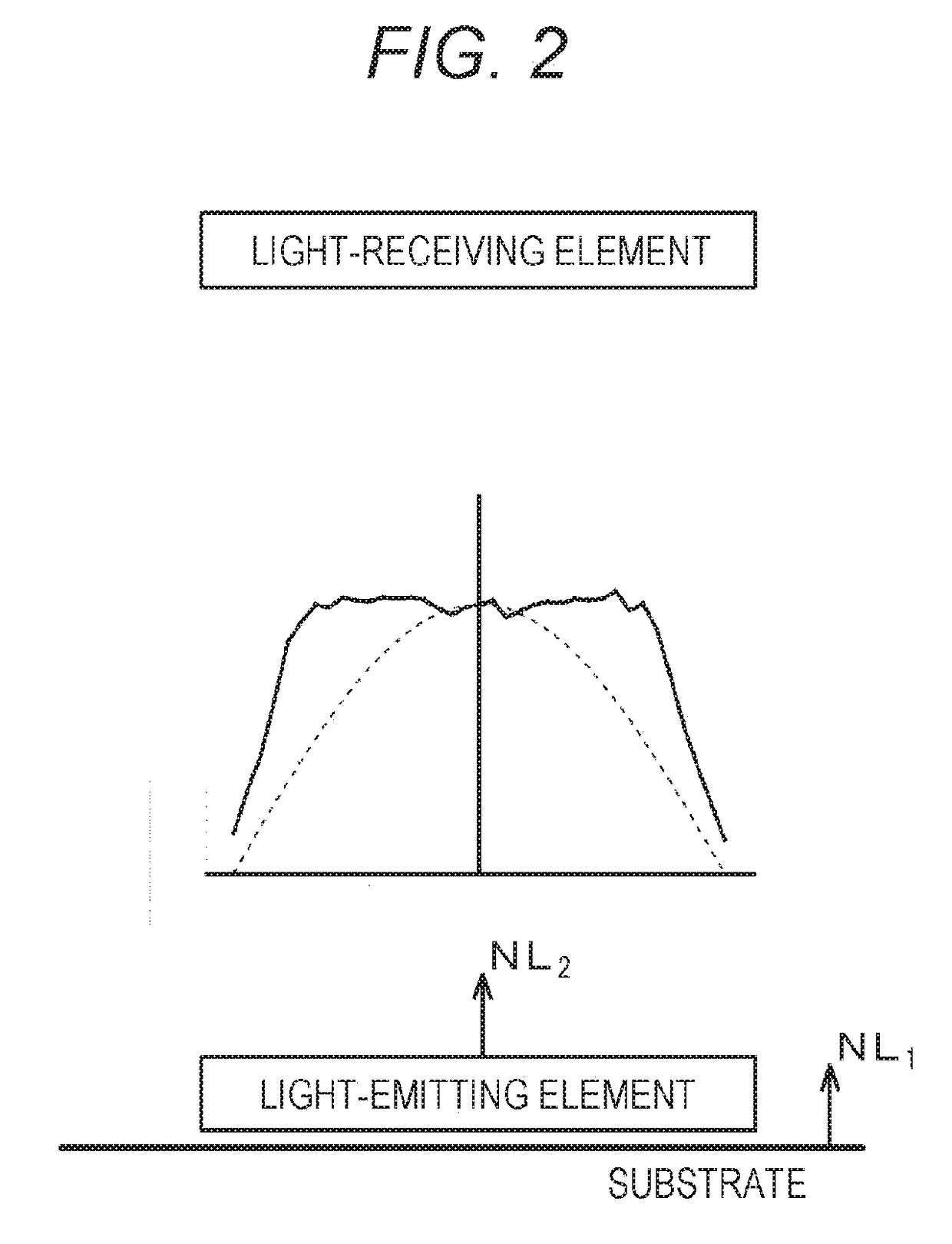Light-emitting element and light-emitting element assembly
- Summary
- Abstract
- Description
- Claims
- Application Information
AI Technical Summary
Benefits of technology
Problems solved by technology
Method used
Image
Examples
example 1
[0061]Example 1 relates to the light-emitting element and the light-emitting element assembly of the present disclosure.
[0062]Specifically, the light-emitting element of Example 1 includes a light-emitting diode (LED) and has a constant light emission intensity over a specific range of emission angle (radiation angle) of light emitted from the center of its main light-emitting surface.
[0063]In addition, as shown in FIG. 1A, which is a schematic cross-sectional view of the light-emitting element, the light-emitting element of Example 1 has a multilayer structure 20 including a first compound semiconductor layer 21 of a first conductivity type (specifically, an n-type in the example), an active layer (light-emitting layer) 23, and a second compound semiconductor layer 22 of a second conductivity type (specifically, a p-type in the example) different from the first conductivity type. The main light-emitting surface of the light-emitting element of Example 1 includes a surface parallel ...
example 2
[0113]Example 2 is a modification of Example 1. In Example 2, the light extraction efficiency is controlled on the basis of the optical interference effect. Specifically, in Example 2, the insulating layer 24 is a transparent layer including, for example, SiO2 or SiN, which has high refractive index controllability. In addition, the thickness of a part of the insulating layer 24 on the side surface (sub light-emitting surface) 20A of the multilayer structure 20 is adjusted to increase the efficiency ηS of light extraction from the sub light-emitting surface, so that the intensity PS of light emitted from the side surface (sub light-emitting surface) 20A of the multilayer structure 20 is increased. When the thickness dIns of the insulating layer 24 satisfies formula (1):
2×nIns×dIns×cos(φ)=(k+½)×λ0 (1)
[0114]wherein dIns is the thickness of the part of the insulating layer 24 on the side surface 20A of the multilayer structure 20, nIns is the refractive index of the insulating layer 2...
example 3
[0115]Example 3 is also a modification of Example 1. In Example 3, the light extraction efficiency is controlled on the basis of the surface texture effect. Specifically, as shown in the schematic cross-sectional view of FIG. 5, the side surface 20C of the multilayer structure 20 constituting the light-emitting element is roughened to produce the surface texture effect. The roughened side surface 20C causes total reflection, which reduces the amount of light remaining in the light-emitting element, so that the efficiency (ηS) of light extraction from the side surface 20C is improved. Thus, the light emission intensity is controlled on the basis of control of the intensity of light emitted from the sub light-emitting surface. More specifically, the side surface 20C or a rough surface layer 25 is subjected to wet etching or dry etching to form surface irregularities depending on the wavelength of light, so that the efficiency (ηS) of light extraction from the side surface 20C is impro...
PUM
 Login to View More
Login to View More Abstract
Description
Claims
Application Information
 Login to View More
Login to View More - R&D
- Intellectual Property
- Life Sciences
- Materials
- Tech Scout
- Unparalleled Data Quality
- Higher Quality Content
- 60% Fewer Hallucinations
Browse by: Latest US Patents, China's latest patents, Technical Efficacy Thesaurus, Application Domain, Technology Topic, Popular Technical Reports.
© 2025 PatSnap. All rights reserved.Legal|Privacy policy|Modern Slavery Act Transparency Statement|Sitemap|About US| Contact US: help@patsnap.com



